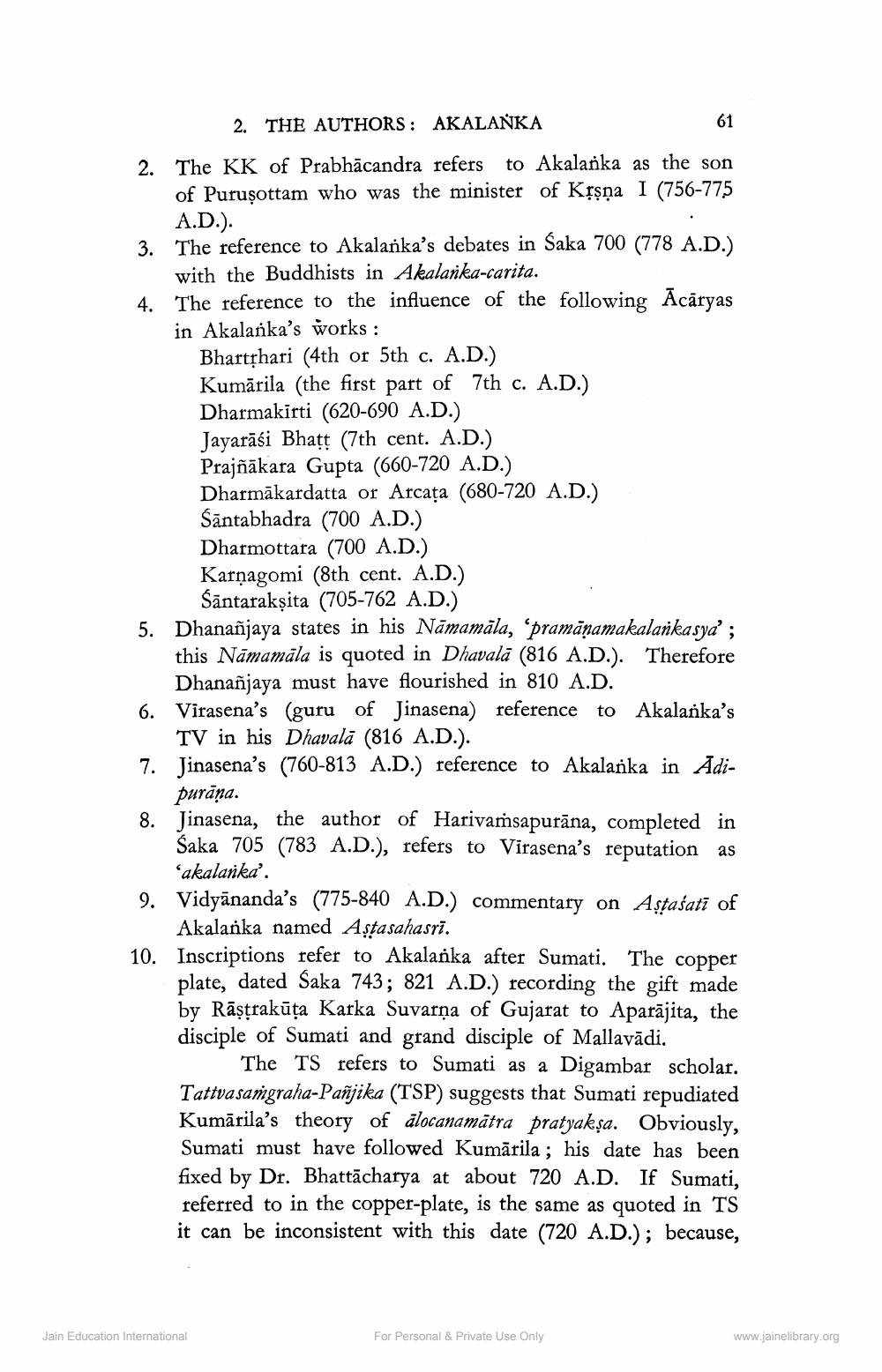________________
2. THE AUTHORS: AKALANKA
2. The KK of Prabhācandra refers to Akalanka as the son of Purusottam who was the minister of Kṛṣṇa I (756-775 A.D.).
3. The reference to Akalanka's debates in Saka 700 (778 A.D.) with the Buddhists in Akalanka-carita.
4. The reference to the influence of the following Acāryas in Akalanka's works:
Bhartṛhari (4th or 5th c. A.D.)
Kumārila (the first part of 7th c. A.D.) Dharmakirti (620-690 A.D.)
Jayarasi Bhatt (7th cent. A.D.)
Prajñākara Gupta (660-720 A.D.)
Dharmakardatta or Arcata (680-720 A.D.)
Santabhadra (700 A.D.)
Dharmottara (700 A.D.)
Jain Education International
Karnagomi (8th cent. A.D.) Santarakṣita (705-762 A.D.)
61
5. Dhananjaya states in his Namamāla, pramāṇamakalankasya'; this Namamāla is quoted in Dhavalā (816 A.D.). Therefore Dhananjaya must have flourished in 810 A.D.
6. Virasena's (guru of Jinasena) reference to Akalanka's TV in his Dhavala (816 A.D.).
7. Jinasena's (760-813 A.D.) reference to Akalanka in Adipurana.
8. Jinasena, the author of Harivamsapurana, completed in Saka 705 (783 A.D.), refers to Virasena's reputation as 'akalanka'.
9. Vidyananda's (775-840 A.D.) commentary on Astasati of Akalarka named Astasahasri.
10. Inscriptions refer to Akalanka after Sumati. The copper plate, dated Saka 743; 821 A.D.) recording the gift made by Raṣṭrakūta Karka Suvarna of Gujarat to Aparajita, the disciple of Sumati and grand disciple of Mallavādi.
The TS refers to Sumati as a Digambar scholar. Tattvasamgraha-Pañjika (TSP) suggests that Sumati repudiated Kumārila's theory of alocanamātra pratyakṣa. Obviously, Sumati must have followed Kumarila; his date has been fixed by Dr. Bhattacharya at about 720 A.D. If Sumati, referred to in the copper-plate, is the same as quoted in TS it can be inconsistent with this date (720 A.D.); because,
For Personal & Private Use Only
www.jainelibrary.org




